Wednesday 7th July 2021
Your Fire Door Questions Answered
Most of us will come into contact with fire doors in our daily life, either at home, at work or in public buildings. But how much do you know about fire doors and their role in saving lives? We’ve compiled a list of key fire door questions based on what customers ask our experts in our fire safety forum.
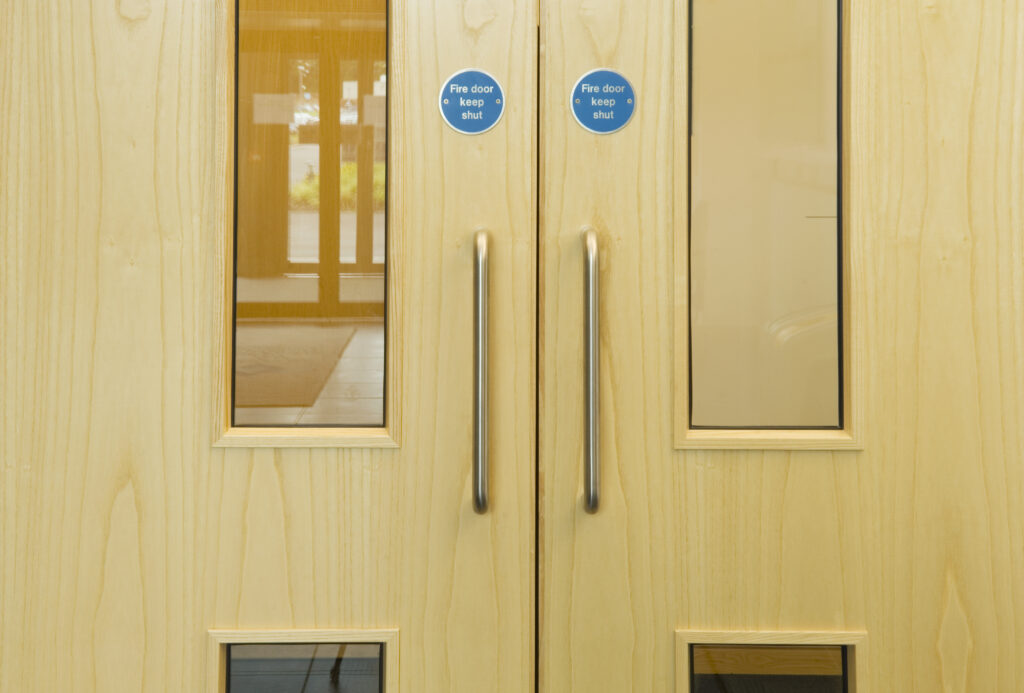
1. Why are fire doors so important?
Fire doors are important because they keep fire or smoke in the room or ‘compartment’ in which it started. They stop it from spreading to other areas of the building. Fire doors are an integral part of any building’s passive fire protection system.
2. What do fire doors do?
Fire doors save lives and prevent further damage to the building and its contents:
- They contain the fire in the room in which it started
- Fire doors keep escape routes, such as corridors, clear from fire, giving occupants of the building longer to escape and better access for the fire service
- They protect the remainder of the building, its contents and other buildings nearby from further damage.
3. How do fire doors work?
Fire doors prevent the spread of fire for a specified time. They are constructed from materials that will withstand fire for either 30 minutes or 60 minutes, depending on the fire door rating. Fire doors are fitted with intumescent strips in a groove on every edge of the door or fire door frame. When a fire breaks out, the heat causes the intumescent strips to expand to fill the gap between the fire door and the frame. This seals the room and stops the spread of fire for a given time. A fire door will only work if it is closed when the fire breaks out, so you should always ensure that your fire door is fitted with an automatic door closer and a sign that identifies the door as a fire door.
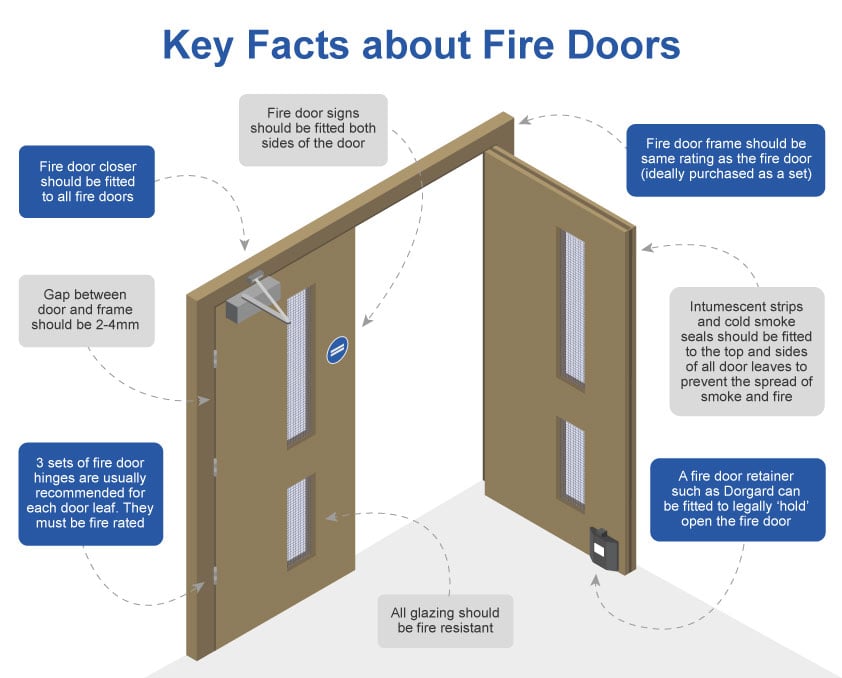
4. How are fire doors made?
Fire doors are usually thicker than a standard door and most have a solid core of variable material. The construction of fire doors varies depending on the manufacture. But, the critical part is that it is tested and certified to withstand fire for at least 30 minutes. Manufacturers must have the design of their fire doors and frames tested together as a set at an approved fire door testing centre. Then they must be considered for certification. When certification is approved, every fire door set constructed to the same design specifications by that manufacturer will be fixed with a label. The label identifies the manufacturer, date of manufacture and fire rating. This label can usually be found on the top edge of the door.
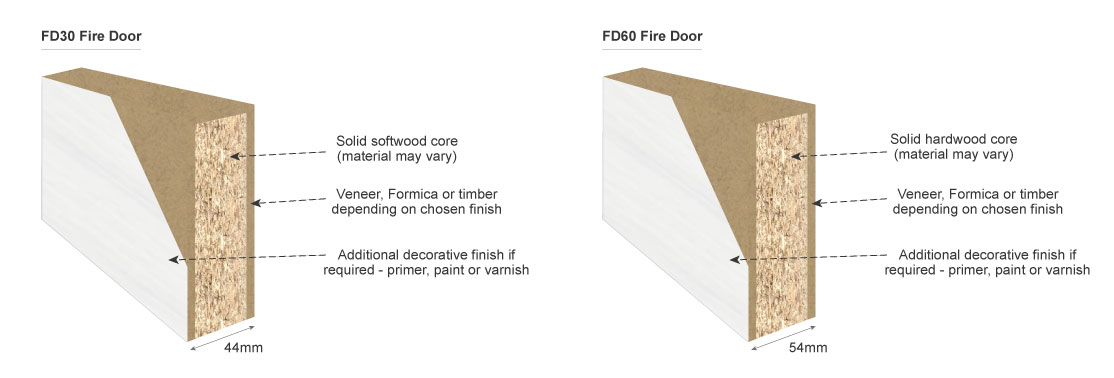
5. How long do fire doors last?
Fire doors and their frames are usually tested to hold back fire for 30 minutes (FD30) or 60 minutes (FD60). Their ability to withstand fire is dependent on them being properly installed with the correct seals and fire rated hardware including fire door closers. The condition of a fire door, especially one that’s in regular use could deteriorate over time. Check your fire doors regularly and ensure any fire door maintenance is attended to promptly. Fire door inspections can help to identify non-compliant fire doors. Fire doors can have a rating greater than 60 minutes but these are not required in most situations.
6. Are fire doors a legal requirement?
Fire doors are a legal requirement in all non-domestic properties, such as businesses, commercial premises, and public buildings. They are also required in residential flats and houses of multiple occupancy. As set out by the Regulatory Reform (Fire Safety) Order 2005, building operators in England and Wales should appoint a ‘Responsible Person’ to manage their fire safety precautions. Their legal responsibilities include a duty to reduce the risk of fire spreading within the premises. Fire doors play an important part in reducing this risk in many buildings. These types of buildings should have a fire risk assessment carried out. Fire risk assessments are an in-depth review of the premises. They will highlight any fire risks with recommendations to reduce or eliminate these risks, including where fire doors should be used and what rating they should be.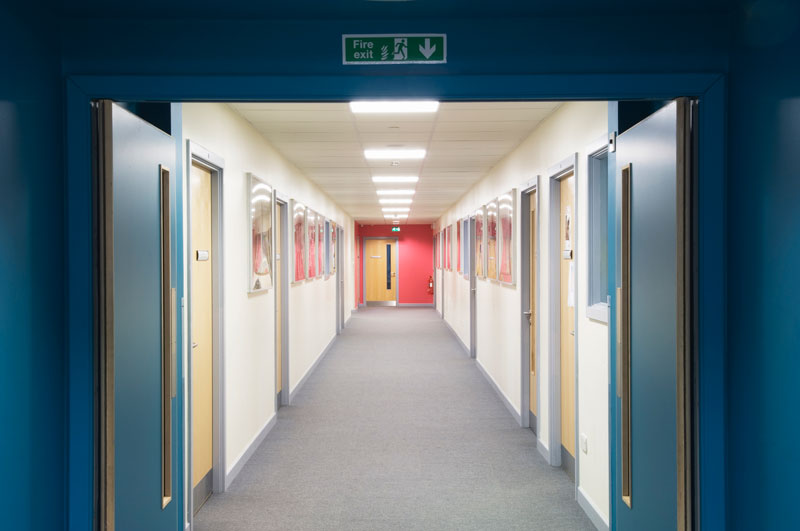
7. Do I need fire doors in my house or flat?
Fire rated doors can be a great way to add extra protection against fire in your home. But are they a legal requirement?
Houses and bungalows: In many homes in the UK fire doors are not a legal requirement, however there are some exceptions. Building regulations details where fire doors should be used:
- Any new build or home renovation that has three or more floors must have fire doors fitted to every habitable room that leads from a stairwell. This applies to loft conversions where an extra floor has been added to a two-storey home.
- Any door leading from your home into an integral garage must be a fire door. In most domestic situations, FD30 (fire doors with a 30 minute fire rating) are sufficient.
Flats and HMOs: Your block of flats should have had a fire risk assessment carried out. This will detail which doors are required to be fire doors. Building regulations Approved Document B2 sets out the following standards:
- Every flat within a block of flats or HMO should have a fire door fitted at the entrance onto the communal area.
- Flats located on floors 4.5m above ground level must have a fire rated door fitted between all habitable rooms as well as the front door.
- Ground floor flats do not usually need internal fire doors as long as each room has an accessible way to escape. They do still need a fire door to be fitted at the entrance if the front door opens onto a communal area such as a corridor.
FD30 fire doors (30 minute fire door rating) should be used for flats.
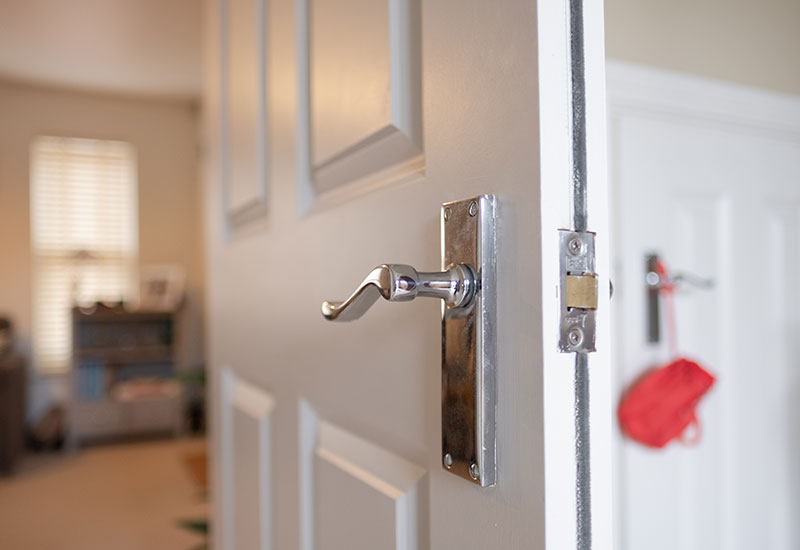
8. Can fire doors be painted?
Although fire doors must be fitted with fire rated hinges, locks and hardware, they do not need a special type of paint. You can paint fire doors using regular decorative paint or varnish without damaging their performance. Avoid using heat or chemical paint strippers if the intumescent seals are in place. Also avoid painting over any hinges, hardware or seals.
There is no need to compromise on style and decoration with fire doors. Choose from a wide range of glazing and finishing options including real wood veneer, Formica laminate or paint. Our fire doors can even be pre-painted in any RAL colour of your choice, saving time and hassle and giving a professional finish.
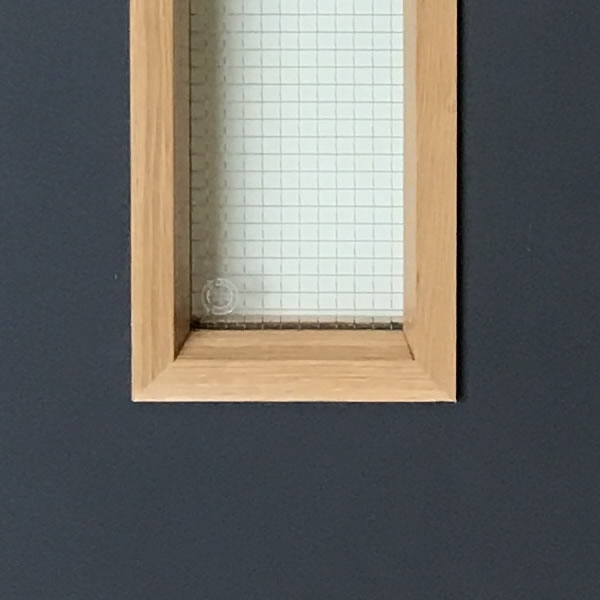
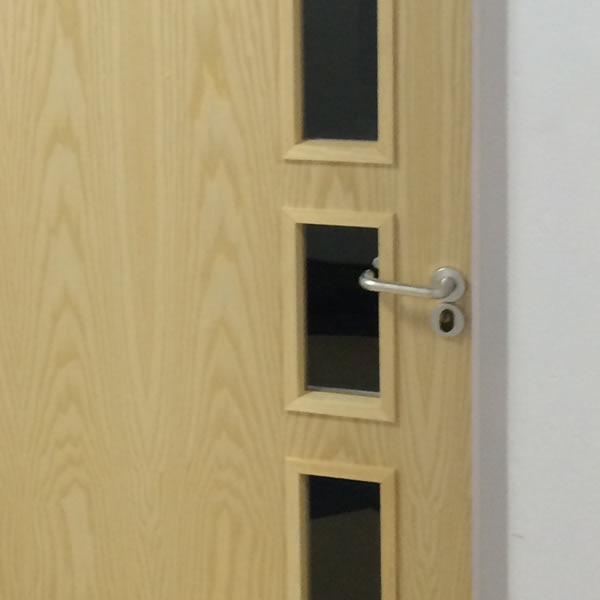
9. Can fire doors be left open?
Fire doors can only be left open if they are held open in a legal way, such as with a fire door retainer or a hold open free-swing door closer.
It is dangerous to ‘prop’ or ‘wedge’ open fire doors. Fire doors are fitted with self-closing devices so that if a fire breaks out, they close and will perform as intended. If a fire door is wedged open, it will not slow or stop the spread of fire. Using a fire door retainer or free-swing door closer will ensure that in the event of a fire the fire door will still automatically close, ensuring fire safety is maintained.
Fire doors can be heavy and cumbersome to operate. They can also cause accessibility issues in some buildings. Fire door retainers, like Dorgard, are a practical and legal solution to this issue. A Dorgard Fire Door Retainer can easily be fitted to an existing fire door and will hold the fire door open legally until it ‘hears’ the sound of your fire alarm. When the alarm sounds, Dorgard will release the fire door, allowing it to close, stopping the spread of fire. Fire door retainers can also help to improve ventilation.
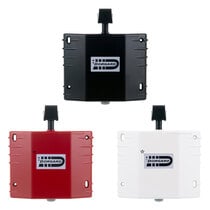
- Hold fire doors open legally
- Wire-free plunger based door holder
- Certified to BS EN 1155:1997 & BS EN 1634
- Acoustically triggered at 65dB
- FREE extended 5 year warranty
- FREE shipping
10. Who can fit fire doors?
Fire doors must be fitted by a competent individual. You should ensure that the person fitting your fire doors has had the relevant training to do so. Whatever the rating of a fire door, if it is badly fitted, it may not withstand a fire for any more than 5 minutes. There are legal requirements and specifications as set out by building regulations governing the installation of fire doors. The gap between the fire door and frame, for example, should be between 2 and 4mm. These specifications can be difficult to meet unless installation is by someone with experience and joinery skills.
The regulations around the fitting of fire doors can be confusing. Code of Practice for Fire Door Assemblies does not specify that any particular certification is required to install a fire door. However, The Fire Safety Order states that they should be installed by a competent person. That is someone with sufficient training and experience, qualifications, and knowledge.
Using a professional fire door installer will give a Responsible Person or homeowner peace of mind that the fitting has been carried out correctly and that the fire door will perform as it should in the event of a fire.
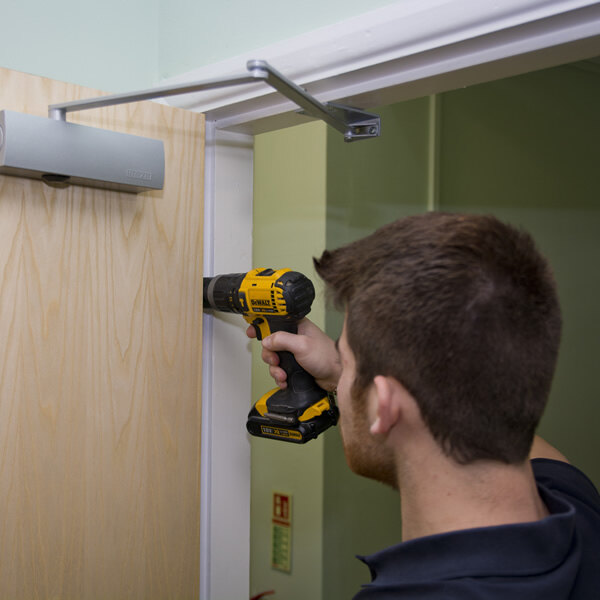
For any fire doors purchased from Safelincs, we can offer a certified installation service carried out be qualified fire door installers. Fire doors should be installed correctly to ensure proper compartmentation.
- Nationwide service carried out by certified fire door installers
- Installation for all fire door sets & hardware purchased from Safelincs
- Complete fire door and frame installation available
- Experienced and knowledgeable installers
Ask a Question
Still have fire door questions? Ask an expert on our forum.

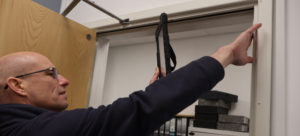
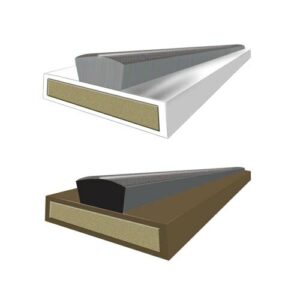 Safelincs offer
Safelincs offer